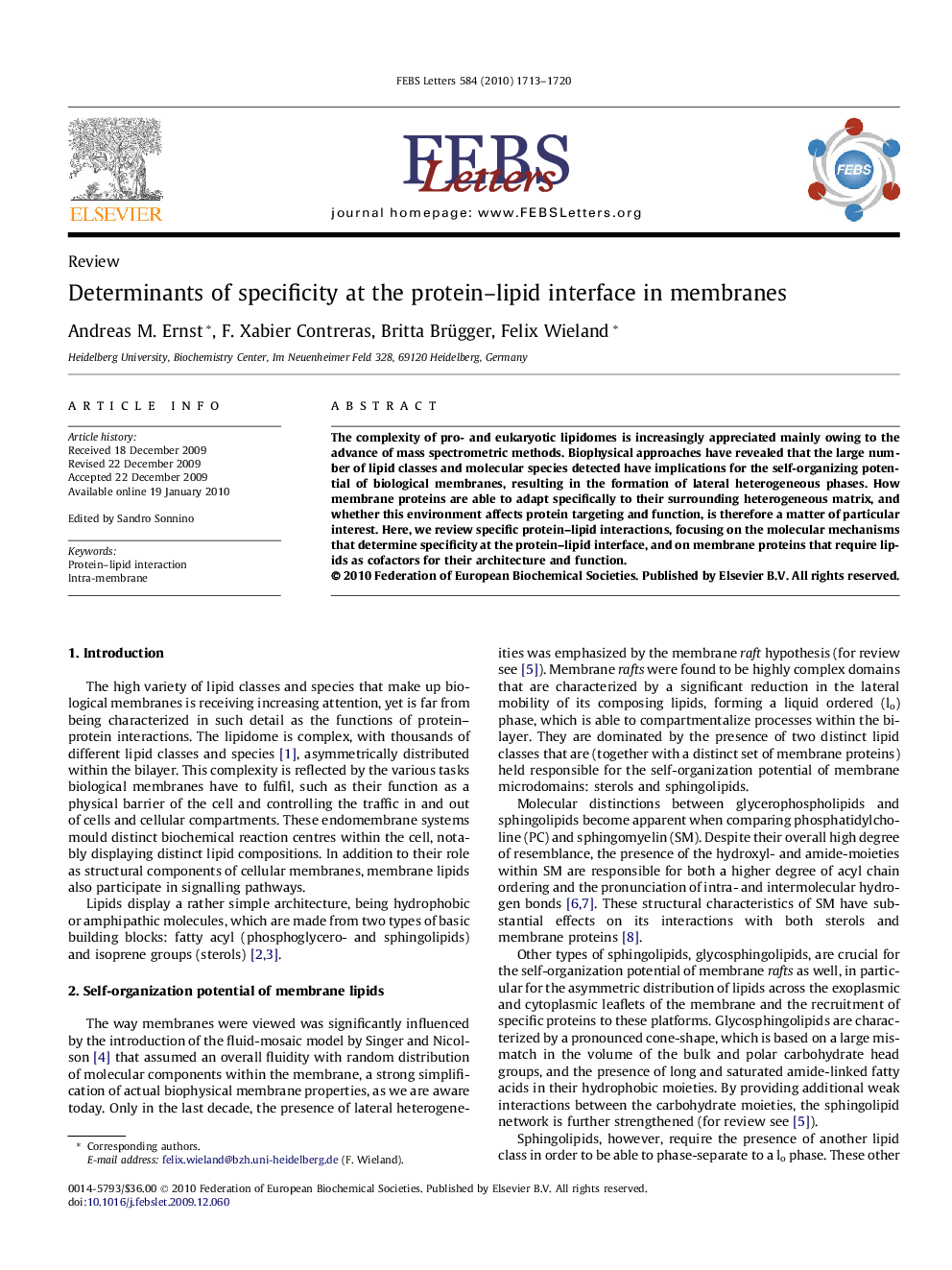| کد مقاله | کد نشریه | سال انتشار | مقاله انگلیسی | نسخه تمام متن |
|---|---|---|---|---|
| 2049294 | 1074123 | 2010 | 8 صفحه PDF | دانلود رایگان |

The complexity of pro- and eukaryotic lipidomes is increasingly appreciated mainly owing to the advance of mass spectrometric methods. Biophysical approaches have revealed that the large number of lipid classes and molecular species detected have implications for the self-organizing potential of biological membranes, resulting in the formation of lateral heterogeneous phases. How membrane proteins are able to adapt specifically to their surrounding heterogeneous matrix, and whether this environment affects protein targeting and function, is therefore a matter of particular interest. Here, we review specific protein–lipid interactions, focusing on the molecular mechanisms that determine specificity at the protein–lipid interface, and on membrane proteins that require lipids as cofactors for their architecture and function.
Journal: FEBS Letters - Volume 584, Issue 9, 3 May 2010, Pages 1713–1720